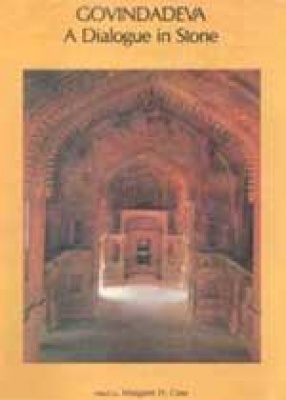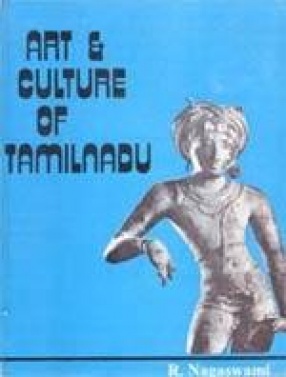The red sandstone temple of Govindadeva, built in the sixteenth century, stands on a hill in the midst of the holy city of Vrindaban. It is the largest temple ever built to have been designed as a single structure, and immediately impresses a visitor with the strength of its massive exterior and the flying, vaulted spaces of its interior. It could, in fact, be called a "Mughal temple", for it was built with Akbar’s patronage by Mana Simha, one of the highest Mughal officials, and its red sandstone construction stamped it with the hallmark of Mughal imperial style. But it was designed to serve the purposes of the new devotional Vaisnavism being spread by the followers of Caitanya Mahaprabhu. This volume for the first time presents a detailed study of Govindadeva’s design and iconography, richly illustrated with photographs and drawings. Other chapters discuss the history of its construction and desecration under Aurangzeb, and describe the temples built along the way for the image of Sri Govindadeva when he traveled to his present home in Jaipur. Documentation from manuscript archives brings alive the lineage of priests serving the temple, and the ritual life of the temple is reconstructed from manuscript sources. The authors are noted Indian, American, and European scholars. The editor, Margaret H. Case, lives in Vrindaban and Lawrenceville, New Jersey; she has edited a number of volumes, most recently Heinrich Zimmer : Coming into His Own (Princeton : Princeton University Press, 1994). The photographer, Robyn Beeche, lives in Vrindaban and is photographing the cultural life of Vraja. She has published her photographs in Arts and Crafts of India by Nicholas Barnard (London : Conran Octopus, 1993). Certain locales have evolved as great cultural centres where fusions take place. The priest and the king, the saint and the householder were magnetically pulled to these centres. In turn socio-political, cultural and artistic movements radiated from them. Vrindaban in the North and Tanjavur in the South are two such centres. The Indira Gandhi National Centre for the Arts in one of its programmes called the Kshetra Sampada has been investigating the dynamics of the centripetal and centrifugal forces of the two regions especially as reflected in architecture, literature, poetry, music and the crafts both in the historical past and in the living traditions. Govindadeva : A Dialogue in Stone is the second in the series of publications relating to the Vraja region conducted jointly with the Sri Caitanya Prema Samsthan, Vrindaban. The results of other aspects are at various stages of publication, viz. (i) Annotated Multi-lingual Bibliography on Vraja, (ii) Evening Blossoms : the Temple Tradition of Sanjhi in Vrindaban, and (iii) an edited and translated edition of Bhaktirasamrta Sindhu. Incorporating the papers presented at a conference held in 1991, the present study, Govindadeva : A Dialogue in Stone, brings into focus the multi-faceted and multi-layered personality of Vraja through the great Temple known as Govindadeva of the Mughal period. Contributors to the volume are Dr. Kapila Vatsyayan, Acharya Shrivatsa Goswami, Dr. George Michell, Dr. Nalini Thakur, Dr. John Burton-Page, Prof. Irfan Habib, Prof. R. Nath, Dr. Monika Horstmann, Shri Copal Narayan Bahura, Dr. Catherine Asher, Dr. Asimakrishna Dasa and Dr. Chandramani Singh. The volume brings into focus some of the little-known historical and cultural aspects of the Govindadeva Temple.
Govindadeva: A Dialogue in Stone
In stock
Free & Quick Delivery Worldwide
reviews
Bibliographic information
Title
Govindadeva: A Dialogue in Stone
Author
Edition
1st ed.
Publisher
ISBN
8185503036
Length
xxii+305p., Illustrations; Map; Appendices; Bibliography; Index; 29cm.
Subjects




There are no reviews yet.